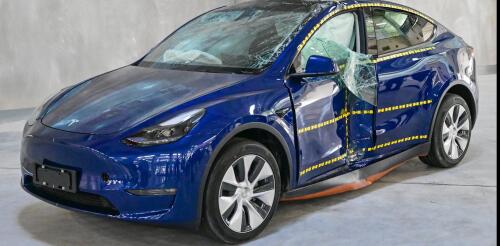Car accidents
“Can you name the truck with four-wheel drive, smells like a steak, and seats 35?” Back in 1998, “The Simpsons” joked about the Canyonero, an SUV so big that they were obviously kidding. At that time, it was preposterous to think anyone would drive something that was “12 yards long, two lanes wide, 65 tons of American Pride.” In 2024, that joke isn’t far from reality. And our reality is one where more pedestrians and bicyclists are getting killed on U.S. streets than at any time in the past 45 years – over 1,000 bicyclists and 7,500 pedestrians in 2022 alone. Vehicle size is a big part of this problem. A recent paper by urban economist Justin Tyndall found that increasing the front-end height of a vehicle by roughly 4 inches (10 centimeters) increases the chance of a pedestrian fatality by 22%. The risk increases by 31% for female pedestrians or those over 65 years, and by 81% for children. It’s hard to argue with physics...
The future of automobiles is electric, but many people worry about the safety of today’s electric vehicles. Public opinion about EV crash safety often hinges on a few high-profile fire incidents. Those safety concerns are arguably misplaced, and the actual safety of EVs is more nuanced. I’ve researched vehicle safety for more than two decades, focusing on the biomechanics of impact injuries in motor vehicle crashes. Here’s my take on how well the current crop of EVs protects people: The burning question EVs and internal combustion vehicles undergo the same crash-testing procedures to evaluate their crashworthiness and occupant protection. These tests are conducted by the National Highway Safety Administration’s New Car Assessment Program and the Insurance Institute for Highway Safety. These analyses use crash test dummies representing midsize male and small female occupants to evaluate the risk of injuries. The tests can evaluate fire hazard either ca...

